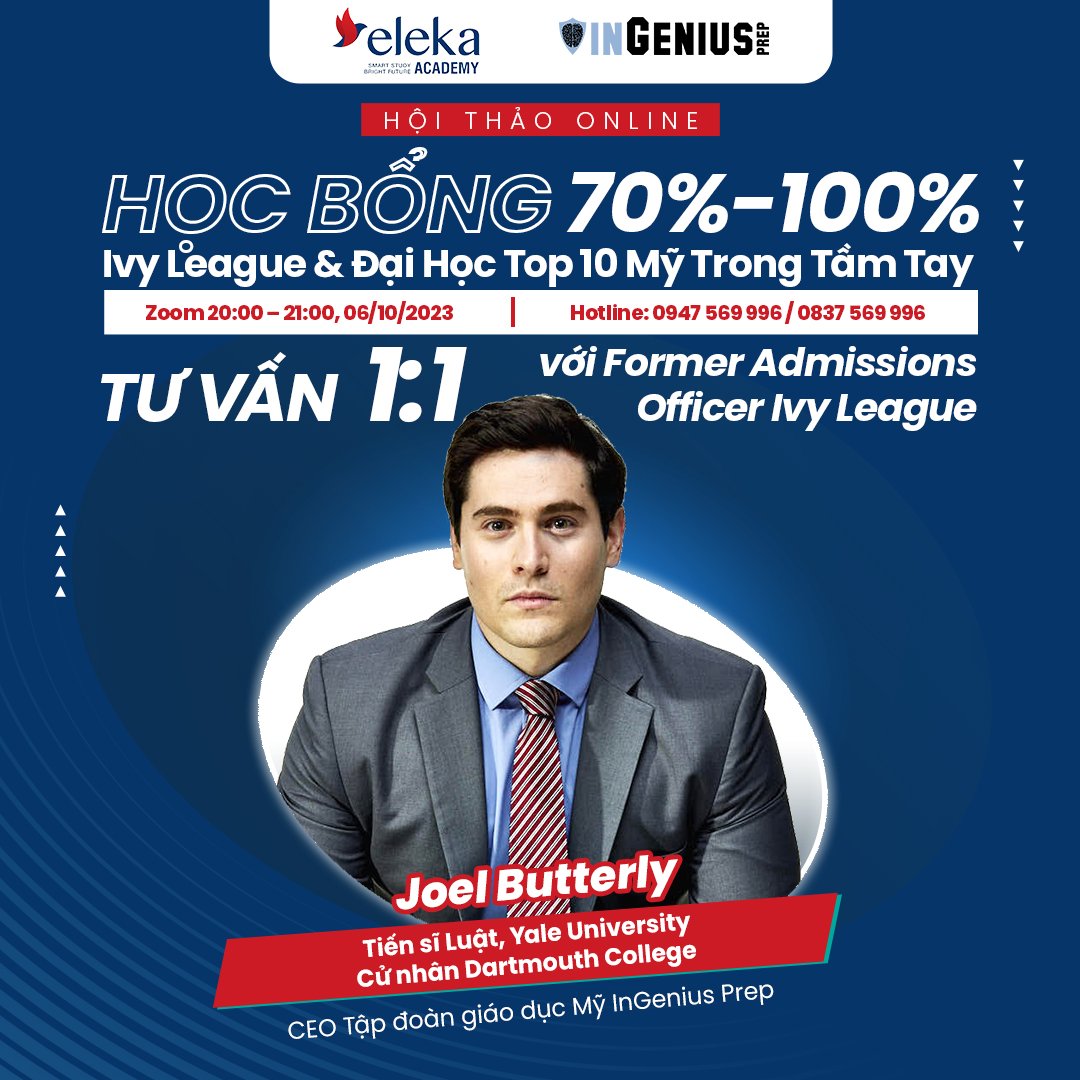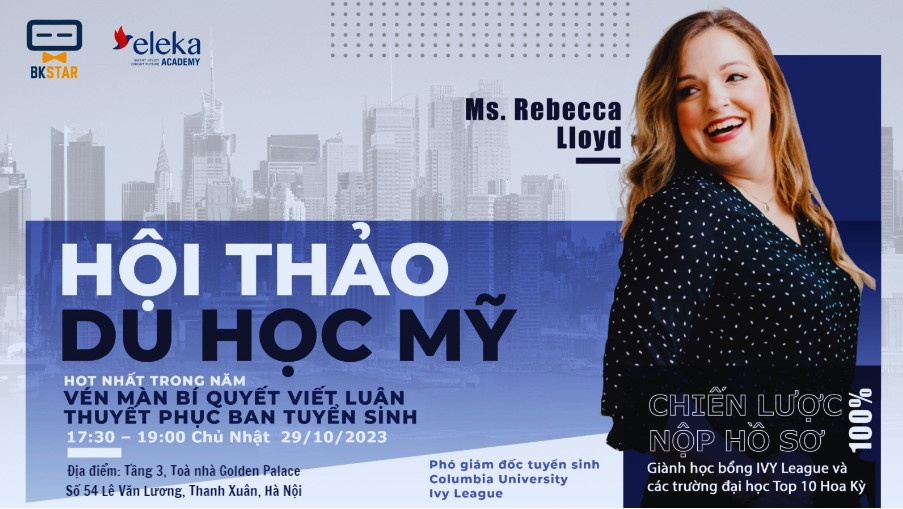Khi điểm số (GPA, SAT, IELTS …) của bạn đã đạt ngưỡng giới hạn, bài luận là yếu tố then chốt, là vũ khí tối hậu giúp bạn thuyết phục ban tuyển sinh đại học Mỹ. Trong series này, Eleka Academy sẽ hướng dẫn trọn vẹn trình tự viết bài luận chính trong bộ hồ sơ du học đại học Mỹ. Bài viết này giới thiệu một bài luận được viết theo bố cục kể chuyện.
Bố cục kể chuyện
Bài luận sử dụng bố cục kể chuyện thường bao gồm ba phần chính: Thử Thách/ Khó Khăn + Tác Động Của Chúng, Tôi Đã Làm Gì Để Vượt Qua và Tôi Đã Học Được Điều Gì. Bạn nên phân bổ đều số lượng từ cho mỗi phần này. Với giới hạn 650 từ, mỗi phần nên chiếm khoảng 200 từ. Cụ thể hơn, bài luận có thể được viết theo một trình tự như sau.
Hiện trạng: Điểm khởi đầu của câu chuyện, miêu tả cuộc sống và thế giới của nhân vật chính (là bạn đấy).
Biến cố: Một sự kiện khiến hiện trạng thay đổi, thường là một điều không hay xảy đến với nhân vật chính. Biến cố này khiến người đọc phải phân vân: điều gì tiếp theo sẽ xảy đến đây? Hay, họ sẽ giải quyết vấn đề này thế nào đây?
Kịch tính: Tình huống trở nên căng thẳng hơn, việc ra quyết định trở nên quan trọng hơn bao giờ hết, nhân vật chính có thêm nhiều thứ để mất.
Cao trào: Thời khắc nhân vật chính phải ra quyết định.
Trạng thái mới: Hồi kết của câu chuyện. Nhân vật chính rút ra bài học.
Hãy cùng xem bài luận này nhé.
The Birth of Sher Khan
The narrow alleys of Mardan, Khyber Pakhtunkhwa, Pakistan where I spent the first 7 years of my life were infiltrated with the stench of blood and helplessness. I grew up with Geo news channel, with graphic images of amputated limbs and the lifeless corpses of uncles, neighbors, and friends. I grew up with hurried visits to the bazaar, my grandmother in her veil and five-year-old me, outrunning spontaneous bomb blasts. On the open rooftop of our home, where the hustle and bustle of the city were loudest, I grew up listening to calls to prayer, funeral announcements, gunshots. I grew up in the aftermath of 9/11, confused.
Like the faint scent of mustard oil in my hair, the war followed me to the United States. Here, I was the villain, responsible for causing pain. In the streets, in school, and in Baba’s taxi cab, my family and I were equated with the same Taliban who had pillaged our neighborhood and preyed on our loved ones.
War followed me to freshman year of high school when I wanted more than anything to start new and check off to-dos in my bullet journal. Every time news of a terror attack spread, I could hear the whispers, visualize the stares. Instead of mourning victims of horrible crimes, I felt personally responsible, only capable of focusing on my guilt. The war had manifested itself in my racing thoughts and bitten nails when I decided that I couldn’t, and wouldn’t, let it win.
A mission to uncover parts of me that I’d buried in the war gave birth to a persona: Sher Khan, the tiger king, my radio name. As media head at my high school, I spend most mornings mastering the art of speaking and writing lighthearted puns into serious announcements. Laughter, I’ve learned, is one of the oldest forms of healing, a survival tactic necessary in war, and peace too.
During sophomore year, I found myself in International Human Rights, a summer course at Cornell University that I attended through a local scholarship. I went into class eager to learn about laws that protect freedom and came out knowledgeable about ratified conventions, The International Court of Justice, and the repercussions of the Srebrenica massacre. To apply our newfound insight, three of my classmates and I founded our own organization dedicated to youth activism and spreading awareness about human rights violations: Fight for Human Rights. Today, we have seven state chapters led by students across the U.S and a chapter in Turkey too. Although I take pride in being Editor of the Golden State’s chapter, I enjoy having written articles about topics that aren’t limited to violations within California. Addressing and acknowledging social issues everywhere is the first step to preventing war.
Earlier this year, through KQED, a Bay Area broadcasting network, I was involved in a youth takeover program, and I co-hosted a Friday news segment about the Deferred Action for Childhood Arrivals policy, the travel ban, and the vaping epidemic. Within a few weeks, my panel and interview were accessible worldwide, watched by my peers in school, and family thousands of miles away in Pakistan. Although the idea of being so vulnerable initially made me nervous, I soon realized that this vulnerability was essential to my growth.
I never fully escaped war; it’s evident in the chills that run down my spine whenever an untimely call reaches us from family members in Pakistan and in the funerals still playing on Geo News. But I’m working towards a war-free life, internally and externally, for me and the individuals who can share in my experiences, for my family, and for the forgotten Pashtun tribes from which I hail. For now, I have everything to be grateful for. War has taught me to recognize the power of representation, to find courage in vulnerability, and best of all, to celebrate humor.
Có thể thấy người viết dành khoảng 1/3 đầu bài luận miêu tả những thử thách mà cô phải đối mặt và những tác động của chúng đối với cô.
Khoảng 1/3 tiếp theo của bài luận tập trung vào những hành động của tác giả nhằm vượt qua thử thách của mình.
1/3 cuối của bài luận là những bài học và nhận thức sâu sắc mà tác giả rút ra sau những hành động của mình. Đó chính là những trải nghiệm góp phần hình thành nên con người của bạn ấy.
Như vậy chúng ta đã tìm hiểu hai kiểu bố cục cơ bản của bài luận chính: bố cục dựng phim và bố cục kể chuyện. Xin nhắc lại, bạn hoàn toàn có thể tự do sáng tạo trong việc lập bố cục cho bài luận cá nhân mà không cần phải sử dụng một trong hai kiểu bố cục trên. Bởi xét cho cùng, bài luận là câu chuyện của riêng bạn và bạn nên kể chuyện theo cách bạn muốn.
Hotline: 0837.569.996 / 0947.569.996
Website: eleka.edu.vn
Fanpage: Eleka Academy
Địa chỉ
Hà Nội: Tầng 6, Sky City Towers, 88 Láng Hạ, Đống Đa
Hải Phòng: 9-10 Manhattan, Vinhomes Imperia, 01 đường Hà Nội, Hồng Bàng










